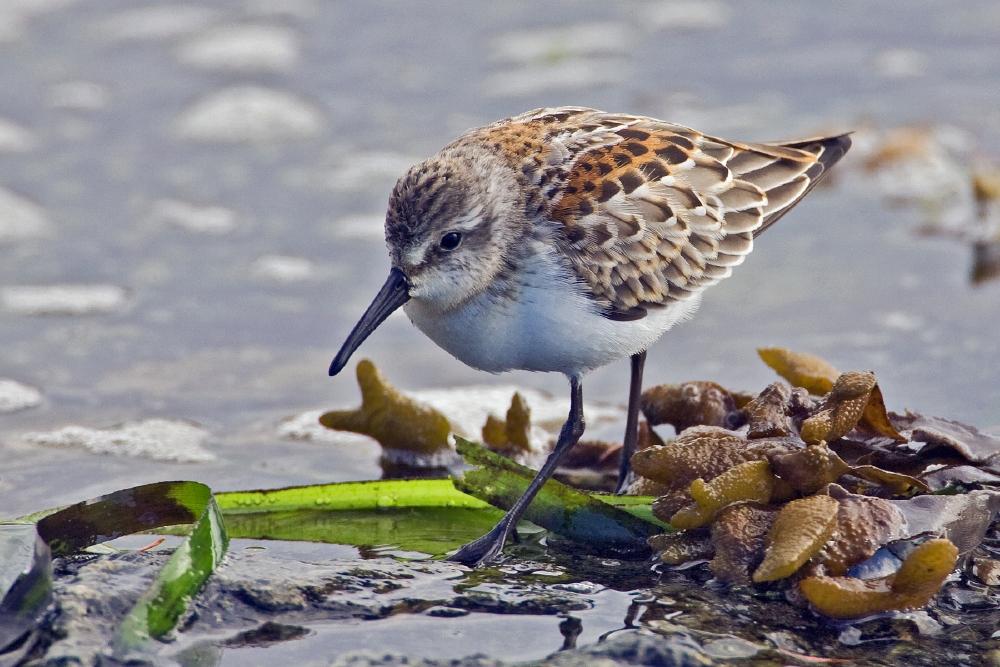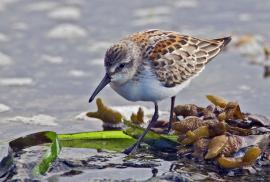Guide to Boreal Birds
Overview
This species often associates with the slightly smaller Semipalmated Sandpipers. Western Sandpipers usually feed in deeper water than the other "peeps" (small sandpipers) and sometimes immerse their bills completely. In all other respects, these sandpipers are much alike in their behavior and are difficult to distinguish in the field. The flocks of these "peeps" that spread out on mudflats during fall and winter take to flight readily when an intruder nears. When the tide covers their shallow feeding grounds, the flocks move to higher ground; there they preen themselves, rest, and wait for the next low tide, when they can resume feeding.
Description
6 1/2" (17 cm). Similar to Semipalmated Sandpiper and not always easy to distinguish, but bill tends to be longer, with more evident droop at tip. In summer, crown and upper back rusty; in winter, crown and upper back dull gray.
Voice
A soft cheep or kreep, higher and thinner than that of Semipalmated.
Nesting
4 creamy eggs, with red-brown spots, in a grass-lined depression on either wet or dry tundra.
Habitat
Shores, mudflats, grassy pools, and wet meadows.
Range/Migration
Breeds in northern and western Alaska. Winters mainly along coast from California and Virginia southward to South America.



